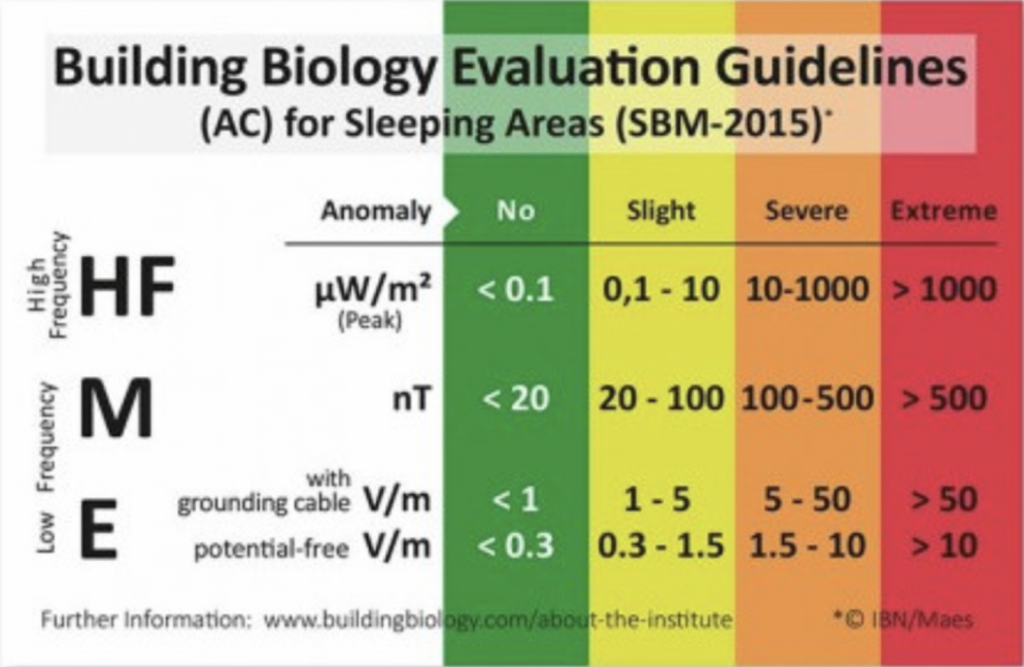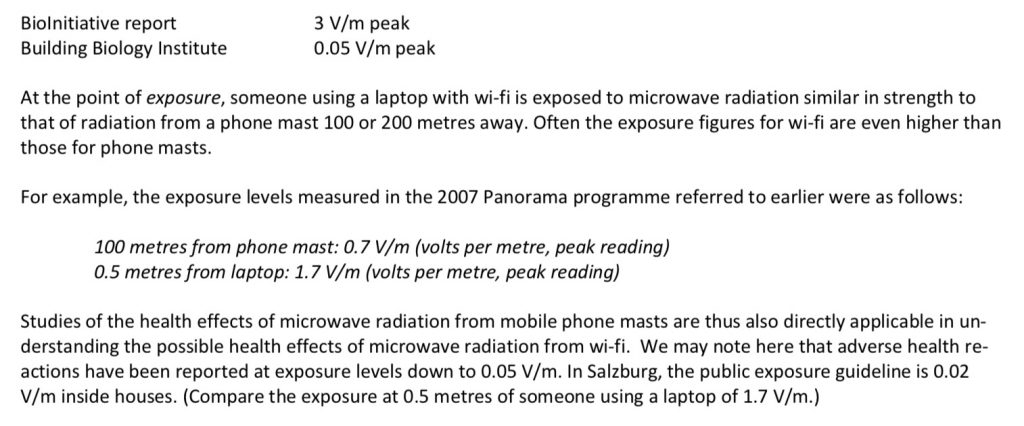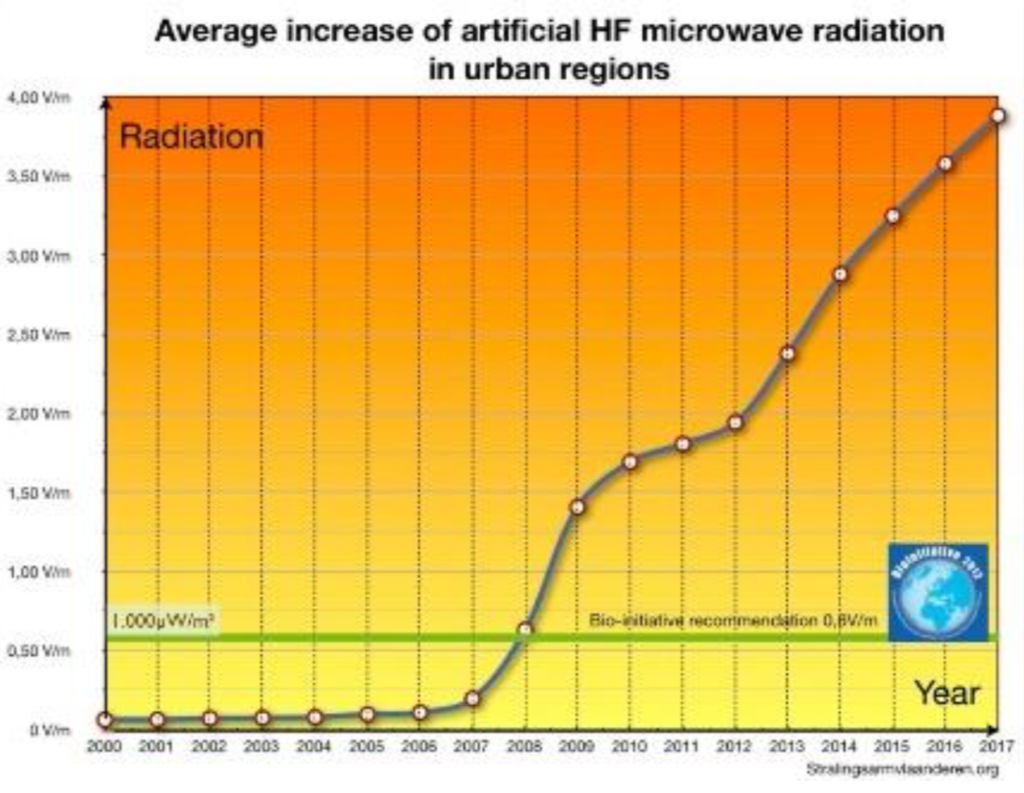In a nutshell:
The ‘safe’ exposure levels used worldwide are based only on a heating effect from intensity of RFR radiation received. This is the Thermal Effect, and is regulated so that exposure does not exceed 56 V/m (10W/m2).
This standard, upheld by the ICNIRP, ignores the principal agent of harm to living systems which is a non-thermal effect from lower intensity and long term exposure to RFR. Safer levels should be nearer 0.5 to 1 V/m (0.0026 W/m2).
The ICNIRP (International Commission on Non-Ionising Radiation Protection) Guidelines, which are repeated by PHE (Public Health England) are reflexively quoted by organisations such as Councils and Schools, to justify all Radio-Frequency Radiation (RFR) exposure to the general public, students and teachers.
These guidelines however are completely inadequate and inappropriate considering the variety of emissions we’re exposed to today. See our page for further information: The ICNIRP

Many International long-term biological guidelines recommend only 0.006 – 0.2 V/m,or 0.1-100 μW/m² (microwatts per square metre) as the long-term exposure limit for prevention of biological effects.
The levels recorded in homes, offices and classrooms near iPads, phones and WiFi are often 2-6 V/m which is much higher than the RFR from any outside masts. In many public areas and streets in the UK the levels are now around 1-8 V/m (250 μW/m2) on a constant basis.
To exceed the ICNIRP guidelines, you would need in the order of 666,000 antennas around your house. It’s rather like saying that the roads are safe for pedestrians whilst you set driving speed limits of a million miles per hour.
Please read this article from the Institute of Electrical and Electronics Engineers (IEEE). They are an industry body who helped to set existing exposure limits decades ago, but who now acknowledge that these are not protective and are urgently calling for a revision of standards to recognise non-thermal biological effects and to radically reduce safe exposure levels.
International long-term biological guidelines to protect health based on scientific evidence:
Seletun 2010 – Scientific Panel on Electromagnetic Field Health Risks: Consensus Points, Recommendations, and Rationales
Bioinitiative 2012 – A Rationale for Biologically-Based Exposure Standards for Low-intensity Electromagnetic Radiation
EUROPAEM EMF Guideline 2016 – For the Prevention, Diagnosis and Treatment of EMF-related Health Problems and Illnesses
IGNIR (International Guidelines on Non-Ionising Radiation) offers science-based advice and guidance on the health and environmental effects of man-made non-ionising radiation. Its aim is to protect people and the environment from detrimental exposure to man-made EMF pollution.
Tables showing limits described by other countries and organisations:
Powerwatch UK: International guidance levels
Safe Living Technologies: EMR exposure guidelines
Building Biology Guidelines Building Biology Guidelines 2015

Reference table for Meters and Units and Target Levels

Link back also to Meters page: https://rfinfo.co.uk/radiation-meters/

